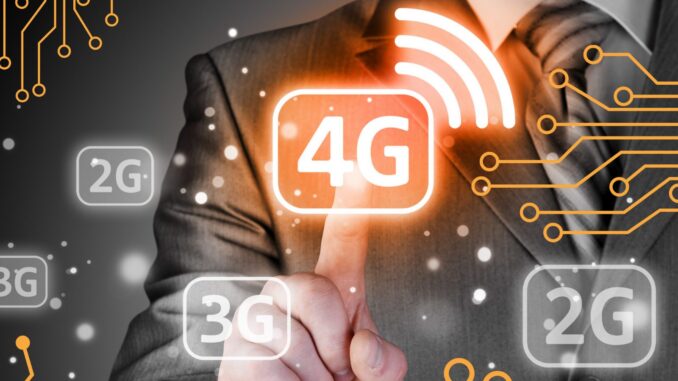Top Topics
- ¿Cómo alargar la vida de un móvil?
- Todas las aplicaciones de Google que puedes usar en el móvil
- ¿Qué es un móvil reacondicionado?
- Ponturecarga regresa con las mejores ofertas: ¡Descubre todas las novedades!
- CUBACEL PROMO FROM MAY 24 TO 31.… ❇️RECHARGE WITH PONTURECARGA.COM❇️
- Línea CubacelTur, tarjeta ❇️ SIM con Datos, SMS y Voz para Turistas en Cuba ❇️
- Promoción de Cubacel “Día de la Madre” desde el 6 al 12 de Mayo
- Nauta Hogar con Modem uSIM: «Todo lo que debes saber sobre la Promo de ETECSA»
- Cómo configurar APN Nauta para acceso a Internet en Cuba con 3G/4G/LTE, Android o iPhone
- ¿Cómo saber si tu celular está bloqueado por la compañía antes de viajar a cualquier país?
- Cómo usar tu iPhone o teléfono Android como punto de acceso móvil
- Las frecuencias en las que recibes la señal de tu móvil, ❇️ aprende a identificarlas ❇️.

By Ponturecarga - 02/09/2024
The frequencies on which you receive your mobile signal, ❇️ learn to identify them ❇️.
In this post we will explain how you can detect and recognize the frequencies to which your mobile phone is connecting. This information can help us identify which is the most suitable amplifier model to solve our coverage problems, for example.
What are Mobile Phone Frequencies?
Mobile phone frequencies are radio bands that allow communication between your phone and your service provider's network. These frequencies vary depending on the network technology, such as 2G, 3G, 4G and 5G, and are assigned by the regulatory authorities of each country.
There are different procedures that allow us to know precisely the frequencies to which our mobile phone connects to make voice calls and 4G and 5G data connections.
There are 4 connections that we can currently find frequently:
• 2G: This network, although it offers very slow connection speeds, is still operational and there are no plans for its elimination since there are many systems and devices that continue to use it: GPRS systems, POS, alarm switchboards, remote control systems, etc.
• 3G / H+. This network is in the process of being replaced by 4G and 5G networks. This network will continue to be used for a couple more years, since it allows data coverage to many users in rural areas with poor coverage.
• 4G / LTE. It is the most widespread data network, used by most mobile phones and routers to connect to the Internet.
• 5G / NR. It improves the speed and performance of 4G networks.
BAND Supported data connections
Band 28: 700 MHz. 5G/ 4G
Band 20: 800 mhz 4G
Band 8: 900 mhz 2G/3G(H+)/ 4G/ 5G
Band 3: 1800 mhz 4G/ 5G DSS
Band 1: 2100 mhz 4G/ 5G DSS
Band 7: 2600 mhz 4G
Band 78: 3500 mhz 5G
How to know the frequencies that my mobile phone receives.
With any Android Smartphone, and an application we can identify the frequencies that we are receiving and to which our Smartphone can connect.
We can also access this information through an iPhone, although the procedure is not very intuitive; so if you are a professional installer we recommend an Android Smartphone for this purpose. Important:
• If our Smartphone does not support 5G, we will not be able to detect the presence of the 5G connection, we will only be able to know the band to which we connect to the 4G network.
• If the objective of the measurement is the installation of a coverage amplifier system, the measurement must be carried out at the highest point of the home, or failing that, at the point where the mobile phone receives better coverage, and a superior connection: 4G / 5G.
• Although phone calls can be made through any frequency thanks to the Volte (voice over 4G) and VoNR (voice over 5G) protocols; the 900 MHz frequency (band 8) is the most used frequency, especially in those environments and locations where coverage is weak.
• We can only know the frequencies received from the company we are using on the mobile phone on which we run the application. If you are an installer, make sure to take the measurements with a SIM card from the same company as your client.
The applications mainly indicate the telephone bands that are received. The bands identify different frequency ranges.
“This information is really useful if you are traveling in another country, remember to inform yourself well before purchasing a data plan from our site: https://ponturecarga.com, or before booking your stay at https://pontucasacuba.com/, if you will visit us. ”
Using a Smartphone with the Android system.
With any Android phone (Samsung, Xiaomi, Opp, etc.) we can precisely know the frequencies present in the location where the application is launched. There are different applications, but we are going to focus on the best known: LTE Discovery, Network Signal Info Lite or Network Signal Guru, less known but very practical.
We are going to focus on the free LTE Discovery application. LTE Discovery allows us to know the bands received and the reception intensity of each of these.
Important:
1. Measurements must be made at the point in the home where our cell phone gets the best coverage.
2. Disable WIFI on your phone so that your phone screen displays the type of connection present.
Steps:
1. Install the LTE Discovery app available on Google Play.
2. When prompted, grant all the permissions required by the app.
– Access the “SIGNALS” tab.
– Take note of the primary frequency: Active Connections and the secondary frequencies: Neighbor Cells.
Active Connections refers to the band being used for the connection that appears on the mobile: 4G/5G/4G+.
Neighbor Cells refers to other frequencies.
The signals received from other cells, and to which we can connect.
If your phone is marked 4G+, it means that two 4G bands are being used simultaneously. The 4G+ connection allows for higher connection speeds.
Perform the measurement after a few minutes to detect which frequencies are received regularly, and others occasionally. This information can be valuable when choosing the most suitable coverage booster device.
It should be noted that we can receive different signals on the same frequency from different base stations or cells. In a rural area with poor coverage, it is normal that we only receive signals from the nearest cell tower. On the other hand, in cities, where we are surrounded by cell towers, it is normal to receive different signals from different frequencies.
Important: The intensity of the received signal is always fluctuating, and taking into account that the antenna of our Smartphone has very little sensitivity, it is necessary to make at least two measurements, especially to be able to detect the highest frequencies that have a lower propagation capacity.
Voice call frequencies.
As we have indicated above, at the moment voice calls can be made both through digital channels: 4G (Volte), 5G (VoNR), H+, and 2G.
However, in order to make voice calls through 5G/4G, several conditions must be met:
• Our Smartphone must be prepared for Volte or VoNR. Mid-low range phones do not usually have these options.
• The mobile phone company that we are using on our Smartphone must have this type of connection enabled. Today, only a few virtual operators allow calls to be made through 5G and 4G.
• The intensity and quality of the 4G connection must be good and stable enough.
If calls are not made through digital channels, operators manage them through two main frequencies: 900 and 1800 MHz.
We can use the Network Cell Info Lite app available for Android to recognize the frequency of voice calls. To do this, we will change the connection of our mobile to 2G or, if necessary, 2G/3G.
Know the frequencies using a spectrometer.
Although we can easily recognize the frequencies we receive using our Smartphone and the indicated procedures, it must be emphasized that this procedure is limited by the reception capacity of current cell phones. Currently, the antennas of Smartphones are very small, and are designed to capture a very wide range of frequencies, factors that negatively determine their reception capacity in environments where the signal is weak.
Therefore, we must differentiate between our cell phone not showing any coverage, and there being no GSM signals present. For this reason, it is very normal that in rural areas far from cell phone towers, homes where the cell phone does not capture a single line of coverage outside, once a high-power amplifier system such as the Arkus 4G is installed, the scenario changes radically, for the benefit of the tenants or clients.
Spectrometers are used with an external antenna, which always has a greater reception capacity, which means that we will be able to receive and measure signals that are impossible with a Smartphone.
Advantages of using a GSM spectrometer
• It allows us to know the signal intensity received from each of the operators, in each band: 700/800/900/1800/2100/2600. This information can be relevant when deciding which is the most efficient mobile phone company for our Router, IoT system, POS or amplifier equipment model.
• It allows us to detect the presence of base antennas that may be saturating the amplifier equipment.
In these types of situations, the use of selective amplifiers is recommended.
• The measurements made using a spectrometer are made using an external antenna that allows us to identify the existing frequencies with greater precision.
How can I find out which mobile networks from other companies my cell phone receives?
With our Smartphone we can find out the connections we receive from other operators, although in a limited way.
To do this, we will access the Smartphone Configuration Menu: Settings / Connections / Mobile Networks / Network Operators.
By default, the “Select Automatically” option is activated. If we deactivate it, the available networks will appear.
This function can be especially useful when we are looking for an alternative to our operator in a location where coverage is very weak. I hope this information is useful to you, tell us about your experiences in this regard.


